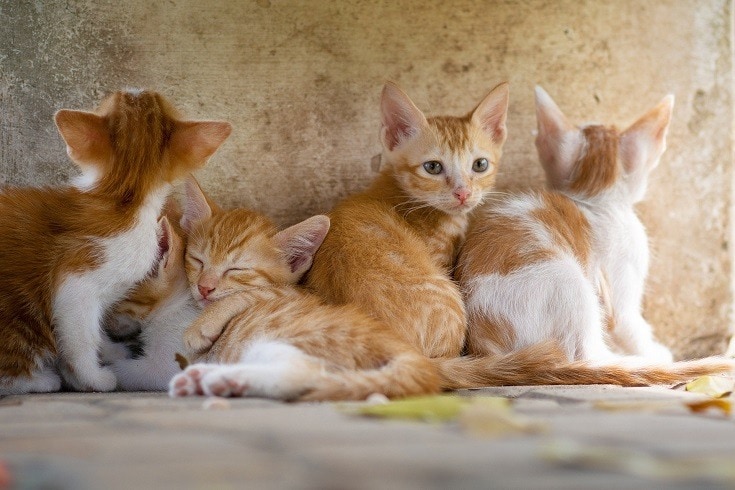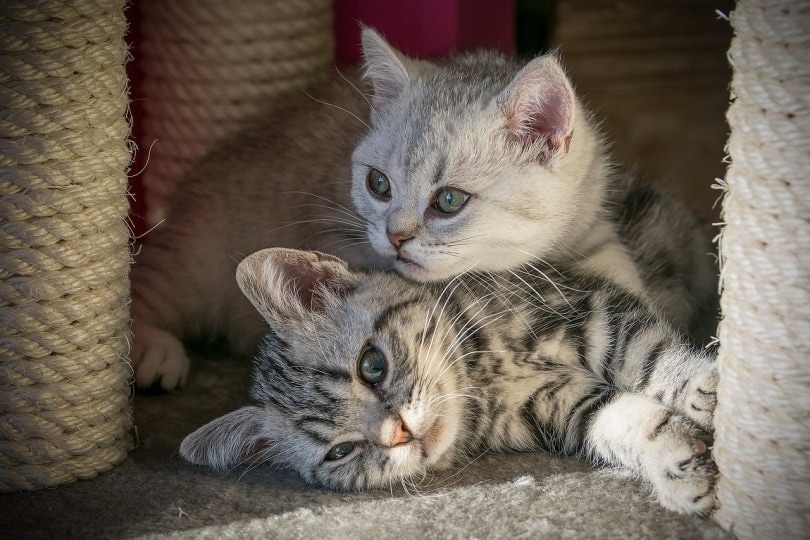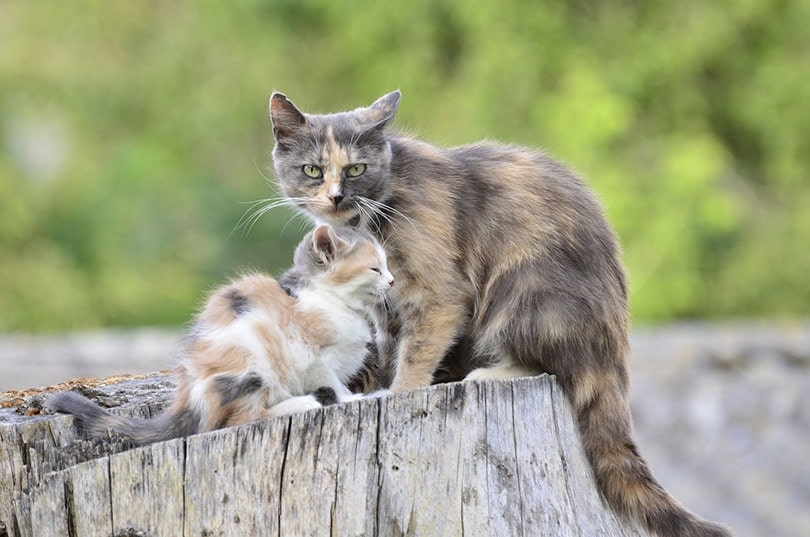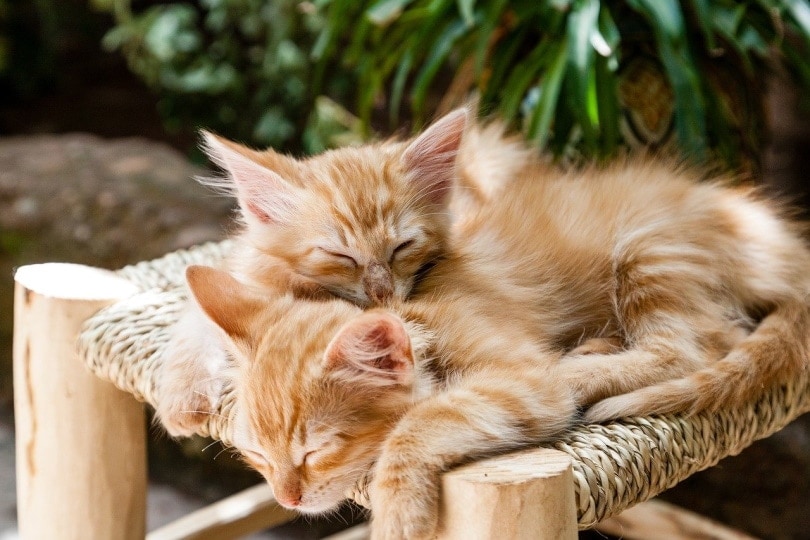What to Do If You Find Kittens Outdoors: 6 Important Steps
By Ed Malaker
Updated on

Suddenly finding kittens in your yard can be quite an exciting surprise. However, once you find them, you’ll likely be unsure about what to do next. It’s only natural to want to help feed them and shelter them. Some people might even want to bring them into the house to be safe from harsh weather and predators, but is this the best thing to do for the kittens? Keep reading while we answer these questions and more so you can better understand what steps you should take if you find kittens outside.
 What To Do if You Find Kittens:
What To Do if You Find Kittens:
1. Don’t Touch Them
If you suddenly notice kittens in your yard, there is a good chance that they are only a few days old, or you would have seen them sooner, unless you have been away from home. During the first few days, the mother depends on the scent of the kittens to know they are hers. Like birds, even the slightest touch can change the kitten’s scent, making it unrecognizable to the mother. Doing so can also convince the mother that the nest is in an unsecured location. She may attempt to move the kittens to another site, which can be a dangerous and life-threatening journey for the newborns.
Most experts recommend waiting at least 3 days before you touch newborn kittens in captivity unless you believe they are in danger. Since you don’t know when they were born, we recommend starting the timer when you find them, so you will need to resist the urge to handle them for now.

2. Assess The Safety of the Kittens
Even though you shouldn’t touch them, we recommend assessing their safety in their current location. If they are in an area where people or any dogs will visit, it’s unsafe. Unknowing people will often try to touch the kittens, which will present the dangers we already mentioned. Dogs, cats, and other animals might see them as food, so it is essential to protect the litter from wildlife.
If you feel the kittens are in danger, we recommend looking for some large cardboard boxes that you can use to cover them for at least a few days. You can often find large boxes for free behind grocery stores, and we found most store managers are happy to help. However, we also want to point out that the mother cat takes a lot of care in choosing the spot where she will have her kittens, so unless you know something she doesn’t, it’s best to leave the cats alone.
3. Wait For The Mother To Return
Before you do anything, we recommend waiting for the mother to return if she isn’t already with the kittens. Feral cats are usually frightened of humans and would normally run, but since she is protecting her kittens, she may be aggressive towards you at first. Feral cats are usually quite thin, and their fur may be matted and dirty. In contrast, house cats are usually well-fed, have groomed fur, and are usually friendly. They are also more likely to be a specific breed, like a Siamese or Maine Coon. Determining if the mother is feral or not will set the path you should follow next.

4. Check Lost Cat Listings
If the mother is a housecat, we recommend checking with your neighbors. Since it is unlikely the cat traveled very far to give birth, it likely belongs to someone in the area, and there is a good chance that they are wondering what happened to it. You can also check the lost cat listings in the newspaper or on neighborhood social media, and many people hang signs on telephone poles when their cat is missing.
5. Socialize the Kittens
If the mother is feral, we recommend socializing them as kittens to get them ready for adoption as soon as possible to give them the best chance at a good life. Kittens are very popular, and there is a good chance you will find them a good home. To socialize the kittens, you will want to spend as much time playing with them and handling them as possible once they are getting close to 1 week old. Socializing them for the first 7 weeks is critical and sets the blueprint for interacting with humans for the remainder of their lives. Kittens are ready for adoption at around eight weeks.
6. Call An Animal Shelter
If the mother does not return for more than 8 hours after you first notice the kittens, you may need to call a local animal shelter for assistance as it’s not normal for a mother to leave for that long, and something might have happened to her. Caring for newborn kittens is a big job, especially for someone without experience, and it’s best left to a professional unless you have a lot of free time on your hands. They will require special formula, bottle feeding, and plenty of care.
You may also need to call an animal shelter if you have difficulty finding a good home for the kittens. The average litter is three to five kittens, but some mothers can have even more than that. If you don’t have the space in your home and can’t find someone to take them, you might need to call the animal shelter for help.
 Conclusion
Conclusion
Finding kittens in your yard can be both exciting and scary, and you should feel good that the cat found your yard to be a safe place. If the mother cat is someone’s pet, it shouldn’t be too hard to find the owners by looking at the lost cat listing. If the mother is a feral cat, you could ignore them, and the mother will raise them, and they will be gone in a few weeks, but that will only contribute to the local feral cat population. We recommend socializing the kittens early and often when the mother is feral to be ready for adoption by good parents in 8 weeks. If the mother is not present, we recommend contacting the local animal shelter or humane society for help.
We hope you have enjoyed reading this short guide and found the answers you need. If we helped you learn something new, please share this guide to what you should do if you find kittens outdoors on Facebook and Twitter.
Featured Image Credit: Pixabay
 What To Do if You Find Kittens:
What To Do if You Find Kittens:










